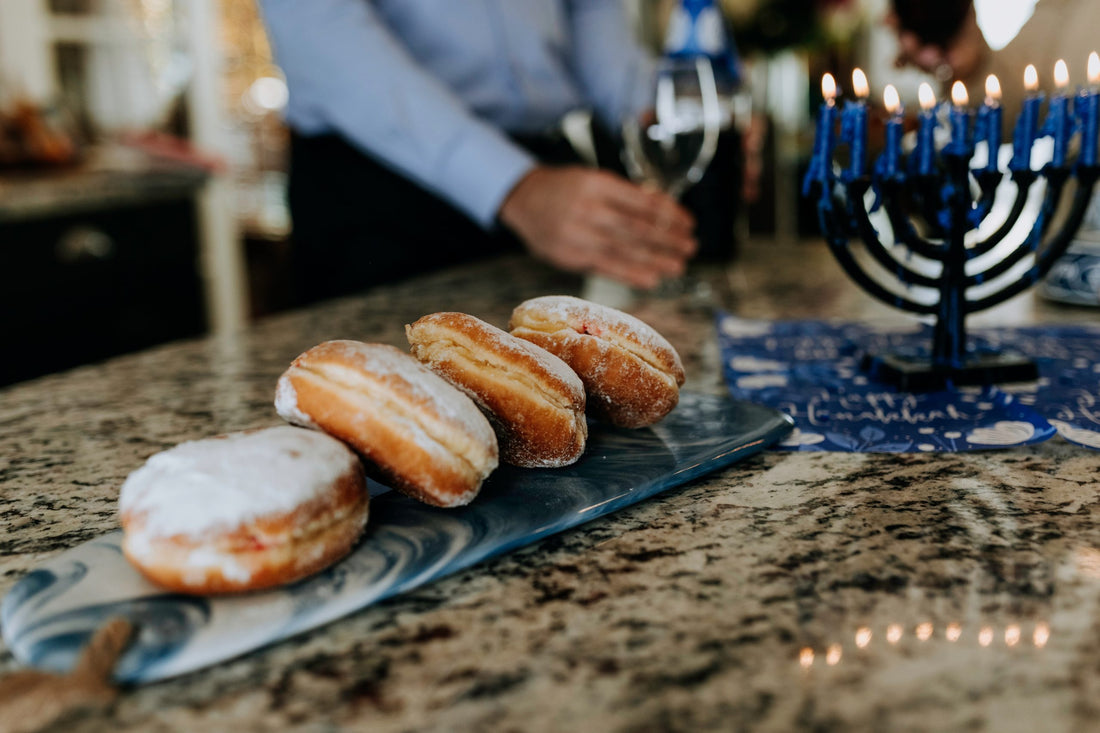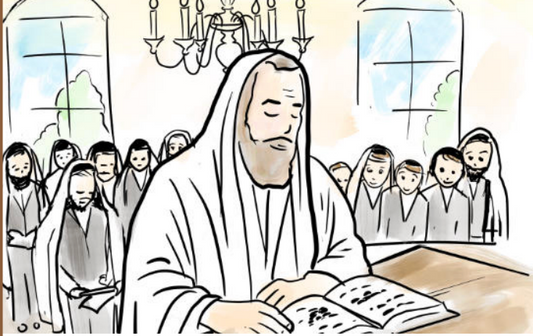Rabbi Hayim Asher Arking
Rabbi Ezra Ghodsi
Many have the custom of eating foods fried in oil on Hanukah. This reminds us of the miracle which happened through oil in the times of the Greeks. Doughnuts, in particular, have become almost synonymous with Hanukah. In fact, this custom dates back prior to the time of the Rambam, whose father writes about this custom of eating dough fried in oil, and cautions not to treat this or any other custom lightly (Hazon Ovadia pg.19).
While doughnuts are delicious, dough fried in oil possesses an interesting question with numerous halachic ramifications. The central question is as follows: What is the status of a plain dough that was cooked or fried and not baked? According to one opinion, since it was originally kneaded as a regular dough, it is still considered bread and hamotzi would be recited. Others say, that since it is cooked or fried, it has no similarity to bread, and is therefore mezonot. Although both opinions are brought in the Shulhan Aruch, the general custom is to follow the second opinion.
If one ate a large amount of doughnuts, is birkat hamazon recited?
As we know, cakes, cookies, crackers, etc. are mezonot. However, when eating more than 216g of one of these, the beracha is upgraded to hamotzi with birkat hamazon. This only applies to mezonot foods that meet one of the definitions of pat haba bekisnin. These items while similar to bread, have a characteristic that varies from regular bread, causing them to be eaten as a snack as opposed to a meal. However, when eating a large amount, they assume the status of bread as they are now being consumed as a meal.
There are three opinions as to what the variation from regular bread is:
1) The item has a sweet filling.
2) The dough was kneaded with either sugar, milk, oil, fruit juice, etc., and it imparts a noticeable taste.
3) It is not soft like bread, but rather hard and crunchy; like crackers or pretzels.
As we follow the opinion that dough which is fried and not baked completely loses its status as bread, doughnuts are not even considered pat haba bekisnin. It would be more similar to pasta or ravioli which are cooked in a pot and are never upgraded to bread status. However, a doughnut that was only baked would follow the rules of pat haba bekisnin and would require hamotzi with birkat hamazon if eating the required amount.
Do I make a beracha on doughnuts eaten at the end of a bread meal?
When eating cakes and cookies for dessert, a mezonot is not recited. Although generally foods eaten for dessert do require a beracha, since these foods are pat haba bekisnin they are already covered with the hamotzi.
Doughnuts are not considered a bread-item and should seemingly require a beracha even at the end of a bread meal. However, in deference to the first opinion above that does consider fried dough a bread-item, we cannot recite a mezonot, as it might have been covered with the hamotzi recited at the beginning of the meal. It is proper to first recite birkat hamazon, and then afterward recite a mezonot and eat the doughnut.
Do I need to separate hallah if making doughnuts at home?
The requirement to separate hallah applies even when baking cookies, cakes, and other pastries, provided that the required amount of flour is being used. However, if the dough is fried or cooked, it would again be subject to our original question: Can a dough that is fried or cooked be considered a bread-item? Since the halacha follows the opinion that it is not a bread-item, hallah does not need to be separated. Some are stringent, and separate hallah without a beracha.
In many cases, if even a small part of the dough is being baked, hallah will need to be separated according to both opinions. A rabbi should be consulted as to the proper process.
Are doughnuts subject to pat or bishul akum laws?
Foods prepared by a non-Jew, even if all ingredients and utensils are 100% kosher, are still subject to the laws of pat akum or bishul akum. Bread, or any bread-like items (e.g., pat haba bekisnin), are included in pat akum. Any other cooked or baked food would fall under bishul akum laws. The laws of pat akum are generally more lenient, and therefore according to many do not apply to a non-Jewish bakery or factory. Per Sephardic custom, there is another distinction between pat and bishul akum. Whereas for pat akum, it would suffice if the oven was turned on by a Jew to be considered pat yisrael, for bishul akum, the Jew needs to place the food on the fire to be considered bishul yisrael. It is not enough if the Jew only turned on the fire.
Doughnuts, which are not a bread-item would appear to be subject to the laws of bishul akum. The fire simply being turned by a Jew would seemingly not suffice. However, Hacham Ovadia was lenient in this regard, especially if it was made in a Jewish-owned factory or bakery. He reasons that while Sephardic custom does not rely on the Jew turning on the fire for bishul akum, in this case where there are opinions that it is considered a bread-item, we can rely on the Jew turning on the fire. He also adds a few more halachic considerations to permit this which are beyond the scope of this article.
Can I make dairy doughnuts?
The Gemara (Pesahim 30b) teaches that one is not allowed to make bread that is kneaded with milk. This prohibition was instituted by the Rabbis out of concern that one will forget or not realize the bread is dairy and will eat it together with meat. Baking dairy bread is only permitted in certain instances.
Although this restriction applies to both bread and crackers alike, one is allowed to bake a large amount of sweet pastries, cakes, or doughnuts even if they are dairy. Since sweet pastries are not eaten together with meat, we are not concerned that a mistake will happen. Although one who ate meat has to wait six hours before eating anything dairy, we do not go so far as to prohibit making something that might be eaten during that time and only prohibit what might be eaten together with meat. Doughnuts sold to consumers must be properly marked to make sure the customer is aware of the dairy status.




